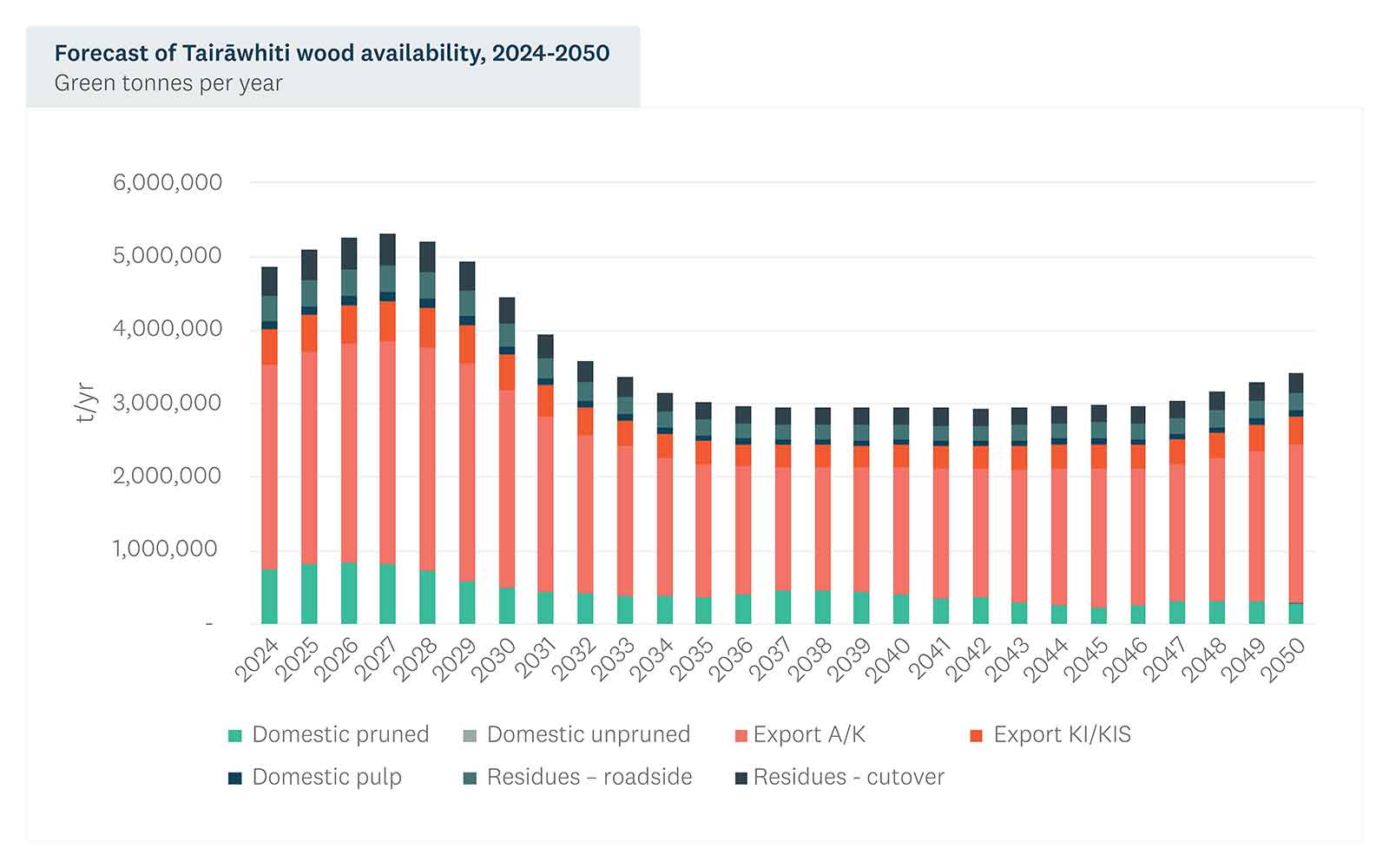Benefits for Tairāwhiti
A Tairāwhiti specific decarbonisation pathway will enable:
- a full view of biomass resource availability, the potential volumes, costs and future demand for bioenergy
- visibility of commercial opportunities for harvesting residues which will reduce the size and volumes of post-harvest slash remaining in forest
- best use of information sharing to encourage fuel supplier confidence to invest in supply side infrastructure.
About the Tairāwhiti RETA
A total of 10 sites spanning the industrial and commercial sectors are covered by the Tairāwhiti Regional Energy Transition Accelerator (RETA). These sites either have process heat equipment larger than 500 kW or are sites for which EECA has detailed information about their decarbonisation pathway. Collectively, these sites consume 240 TJ of process heat energy, primarily from piped fossil gas, and currently produce 13 kt per year of CO2 emissions. RETA aims to demonstrate the pathways to eliminate as much of these process heat emissions as possible.
The focus of the Tairāwhiti report – the culmination of phase one of the RETA programme, is the dominance of biomass as an economic potential for fuel switching. Both biomass and electricity are considered as potential fuel sources.
RETA also recognises the importance of demand reduction and thermal efficiency measures for reducing energy consumption and right sizing the boiler investment, which in turn affects decision-making around fuel switching.
The report explains a range of decarbonisation pathways, all of which show how the combined decisions of a range of process heat users may lead to common infrastructure challenges and opportunities from a supply perspective. Across the 10 sites, there are 23 individual projects covering demand reduction, heat pumps and fuel switching. The 'MAC Optimal' pathway sees fuel decisions that result in 10% of the energy needs supplied by electricity and 90% supplied by biomass.
Insights explored in the Tairāwhiti report:
- The feasibility and potential of forest residues to reduce process heat fossil fuel use and emissions. The underlying cost of the available fibre alone could be up to $116M out to 2050.
- The key role demand reduction and heat pumps play in the fuel switching decision and infrastructure investment.
- Timeframes for decarbonisation under different pathway scenarios, that is:
The business as usual or ‘BAU’ decarbonisation pathway, which uses actual project timing or 2050 where unavailable, is the slowest decarbonisation path.
The marginal abatement cost or ‘MAC’ optimal pathway suggests 87% of emission reduction projects can be cost neutral prior to 2028.
- The role for infrastructure to play in enabling the transition to renewables and possibly bringing it forward.
- The optimisation of infrastructure investment, capacity, and timing.
- The significant potential of biomass as part of the local mix and the work needed to be undertaken with forest owners to understand the logistics, space and equipment needed for harvesting residues.
Read the report
Download the Tairāwhiti RETA report and discover the regional benefits of decarbonisation.
RETA highlights the region's abundant forestry resources and how it could contribute to biomass's viability within the region, while having significant additional volumes that could be utilised in other regions.
Next steps
EECA is currently completing RETAs throughout the rest of the North Island.
We are happy to hear from anyone wanting to support the implementation of recommendations in the Tairāwhiti RETA report.
Email RETA@eeca.govt.nz with any questions.

